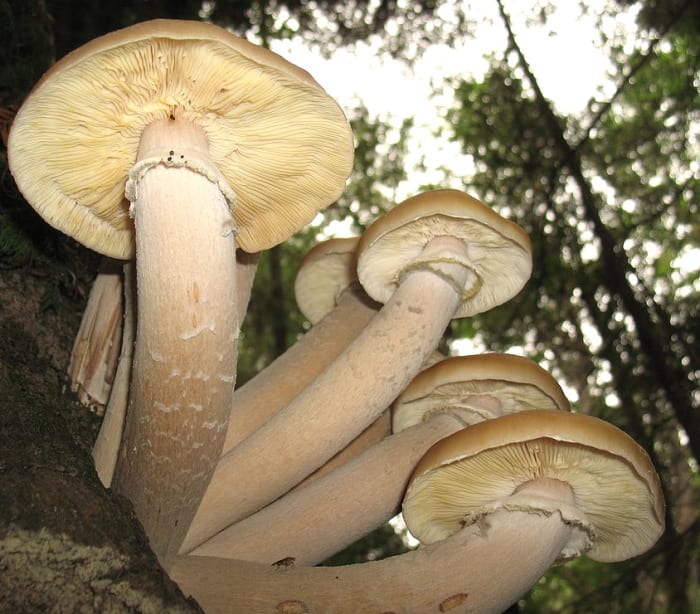The biggest living organism in the world is armillaria ostoyae which grows in malheur oregon u s its size is more than 2 174 acres and its age is around 2 400 years

The Largest Living Organism on Earth: Armillaria ostoyae in Malheur, Oregon

In the heart of Malheur, Oregon, lies a remarkable and awe-inspiring living organism known as Armillaria ostoyae. This phenomenal fungus holds the title for being the largest living organism in the world, stretching across a massive expanse of more than 2,174 acres. But its sheer size is not the only astonishing aspect. Armillaria ostoyae is estimated to be approximately 2,400 years old, making it one of the oldest living organisms on our planet.

Armillaria ostoyae, also known as the honey mushroom, is a species of fungus that thrives in the temperate forests of North America. Its underground network of interconnected threads, called mycelium, allows it to spread and colonize vast areas. This underground network is an intricate web of fungal threads that can extend for miles, forming a colossal living system beneath the forest floor.
The immense size of Armillaria ostoyae is a testament to the tenacity and adaptability of nature. Over thousands of years, this organism has quietly and steadily expanded its reach, gradually engulfing more land within its mycelial network. Its growth is slow but relentless, spreading through the soil and feeding on decaying organic matter, such as fallen trees and dead plant material.
Despite its massive size, Armillaria ostoyae remains hidden underground, invisible to the naked eye. It is only when the fruiting bodies, commonly known as mushrooms, emerge from the forest floor that we catch a glimpse of this remarkable organism. These mushrooms can vary in appearance, with colors ranging from honey-yellow to brown. They often grow in clusters near the roots of trees, feeding off their decaying matter.
The discovery of Armillaria ostoyae’s colossal size came as a surprise to scientists who stumbled upon its vast mycelial network. Using advanced techniques and DNA analysis, researchers were able to confirm that what appeared to be separate mushrooms in fact belonged to a single organism. This revelation catapulted Armillaria ostoyae into the record books as the largest living organism on Earth.
The significance of Armillaria ostoyae extends beyond its size and age. This massive fungal network plays a crucial role in forest ecosystems. It acts as a natural recycler, breaking down dead organic material and returning nutrients to the soil. The mycelium also forms symbiotic relationships with trees, aiding in their growth and providing them with essential nutrients in exchange for carbohydrates.
Armillaria ostoyae’s ability to cover vast distances and endure for centuries serves as a testament to the resilience of nature. However, it also faces threats. Urbanization, deforestation, and climate change pose challenges to the continuance of this magnificent organism. As we strive to protect and preserve our planet’s biodiversity, it becomes crucial to recognize and appreciate the wonders of nature, such as Armillaria ostoyae, and the vital roles they play in sustaining our ecosystems.
In conclusion, Armillaria ostoyae stands as a fascinating testament to the remarkable qualities of the natural world. Its immense size and ancient age make it a true marvel of nature, capturing the imagination of scientists and nature enthusiasts alike. As this colossal fungal organism continues to thrive silently beneath the surface, let us marvel at its magnificence and work towards preserving the delicate balance of our natural ecosystems.
Source: Say Media
Tags
Share
Related Posts
Quick Links
Legal Stuff

